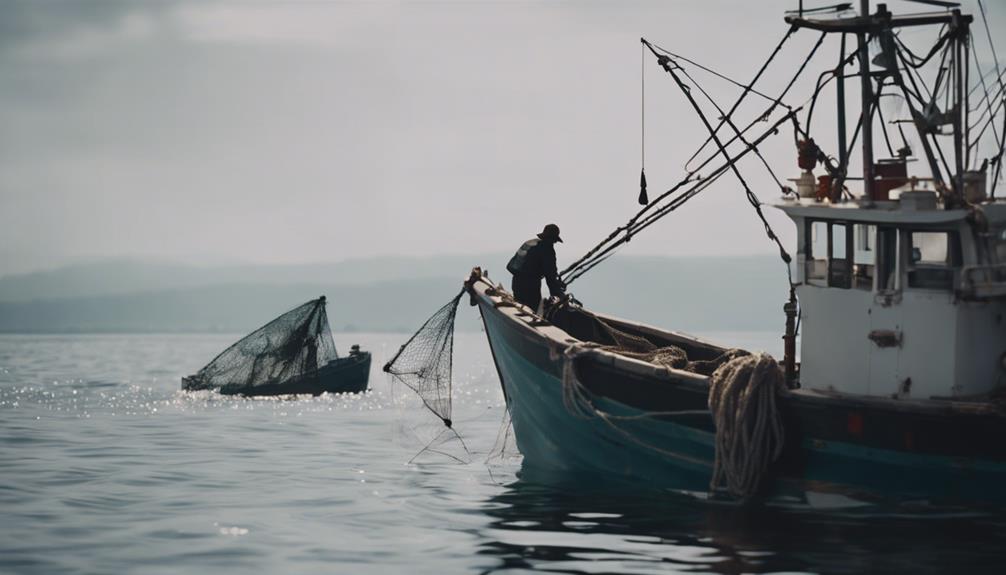Imagine fishing as a dance: hand lining is like a graceful waltz, where each movement is deliberate and intimate. On the other hand, commercial fishing resembles a bustling ballroom, with nets cast wide to capture a grand spectacle.
These two worlds may seem oceans apart, but the differences go beyond just scale and technique. As we peel back the layers, we'll uncover how these distinct approaches to fishing impact not only the catch but also the waters they rely on.
Key Takeaways
- Hand lining is sustainable, minimizing environmental impact.
- Commercial fishing harms ecosystems through bycatch and overfishing.
- Conservation practices promote sustainable fishing methods.
- Regulations and monitoring programs ensure compliance with sustainability principles.
Hand Lining Sustainability Comparison

Hand lining is a sustainable fishing technique that minimizes impact on marine ecosystems by using a single line with baited hooks. This method promotes selective fishing, allowing fishermen to target specific fish species while reducing unwanted catch. Unlike commercial fishing that often involves large-scale operations with trawlers and nets, hand lining focuses on individual catches, aligning with conservation principles.
Environmental Impact of Commercial Fishing

From the sustainable practice of hand lining, commercial fishing methods, such as trawling and longlining, have been shown to have detrimental environmental impacts on marine ecosystems. Commercial fishing can lead to habitat destruction, bycatch, population declines, overfishing, depletion of fish stocks, pollution, and unsustainable practices.
Trawling and longlining operations often damage the seabed and coral reefs, altering the natural habitat of various marine species. Bycatch, the unintentional capture of non-target species, can result in population declines and disrupt the delicate balance of marine ecosystems. Overfishing in commercial fisheries depletes fish stocks, impacting the entire marine food chain and biodiversity.
Additionally, pollution from commercial fishing vessels, including oil spills and plastic waste, harms marine life and habitats. Unsustainable practices in commercial fishing can ultimately lead to the collapse of fish populations, jeopardizing food security and livelihoods.
Conservation Practices in Fishing

Conservation practices in fishing focus on reducing the environmental impact of fishing activities to protect marine ecosystems and biodiversity. By implementing sustainable fishing methods, such as gear modification and bycatch reduction devices, negative effects on marine life can be minimized.
These efforts play a critical role in preserving fish populations for future generations and maintaining the balance of marine ecosystems. Regulations and monitoring programs make sure that fishing activities align with conservation goals and sustainability principles.
It's essential to prioritize these practices to safeguard the health of our oceans and the diversity of marine species.
Conclusion
To conclude, hand lining and commercial fishing have significant differences in scale, technique, and purpose. Hand lining is small-scale and traditional, while commercial fishing is large-scale and profit-driven.
These differences result in varying impacts on marine ecosystems and sustainability. By understanding these distinctions, we can better appreciate the importance of conservation practices in both types of fishing to make certain the long-term health of our oceans and fish populations.
👨👩👧👦 Dwight’s a married dad of 4 who loves to cast a line 🎣 into both fresh and salt waters. His heart belongs to his family and the sea. 🌊 #FamilyMan #FishingLife #DadOf4 🐟✨

